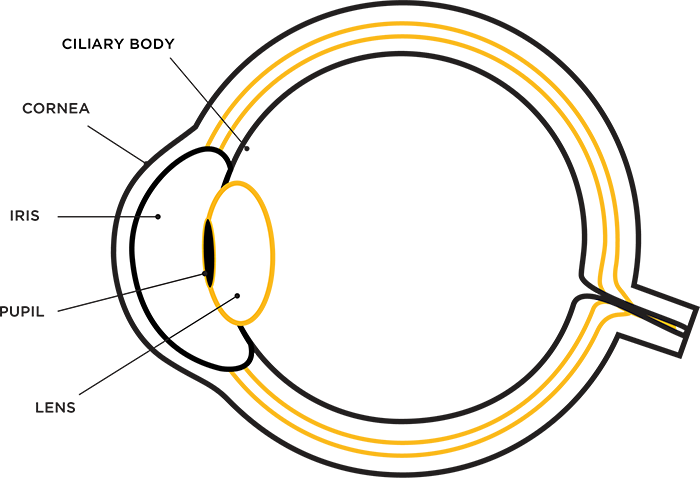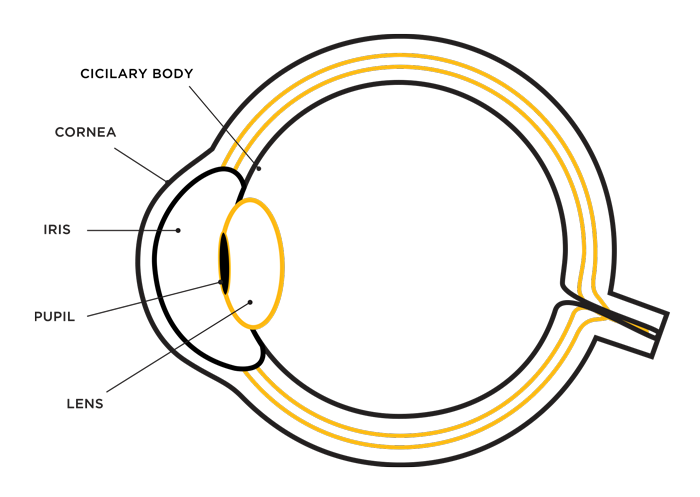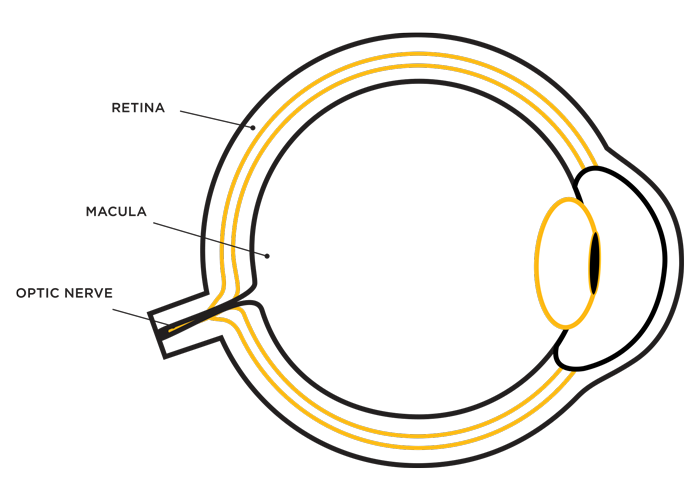Your source for eye health education
At Viteyes, we are committed to providing you with the latest educational information about your eyes and the vitamins that impact eye health.
Our eyes age as we do
Like any other part of the body, our eyes and sight weaken as we age. At a young age, the lens within the eye is flexible and elastic, it has the ability to react, change size and shape with the help from the muscles that surround it to accommodate images near and far. Yet as we age, the muscle fibers surrounding the lens lose flexibility and stiffen. The ability to focus light and view images properly declines. Eye sight is a way of life, protect yours with the nutrients they need to stay healthy.
CilIary Body
The ciliary body is the part of the eye that connects the iris to the choroid, a vascular layer that provides nourishment and oxygen. The ciliary muscles within the ciliary body allow for the viewing of objects at varying distances and regulate the flow of fluid (aqueous humor) throughout the eye. Without proper nutrition, eye pressure increases preventing the cicilary muscles from regulating the flow of liquid resulting in build up of liquids that can cause glaucoma.
CORNEA
The cornea is the clear film that covers the pupil and the iris. It provides the eye the ability to focus light in order to see objects within your line of sight. The cornea is comprised of 5 layers, each of which have their own specialized functions. As the outer layer, the cornea is vulnerable to infections and scratches that can affect sight.


Cicilary Body
The cicilary body is the part of the eye that connects the iris to the choroid, a vascular layer that provides nourishment and oxygen. The cicilary muscles within the cicilary body allow for the viewing of objects at varying distances and regulate the flow of fluid (aqueous humor) throughout the eye. Without proper nutrition, eye pressure increases preventing the cicilary muscles from regulating the flow of liquid resulting in build up of liquids that can cause glaucoma.
CORNEA
The cornea is the clear film that covers the pupil and the iris. It provides the eye the ability to focus light in order to see objects within your line of sight. The cornea is comprised of 5 layers, each of which have their own specialized functions. As the outer layer, the cornea is vulnerable to infections and scratches that can affect sight.
IRIS
The iris is what gives individuals their distinctive eye color. The iris is made up of tissue called the stroma. The stroma connects to the muscles that allow the pupils to dilate and contract. The iris is surrounded by the sclera which is the large amount of visible white space. Although developing a disease of the iris is rare, healthy diets that affect intraocular pressure can help to prevent diseases that indirectly affect the iris.
PUPIL
The opening in the center of the iris, the pupil allows light to enter the eye where it is then focused on to the retina and the process of sight begins. The pupil appears black due to the amount of light that the tissue absorbs as it passes through. As we age, the muscles working within the pupil can weaken making it harder to see at night since the muscles within the pupil have difficulty dilating (expanding) and constricting (shrinking). Maintaining a balanced diet can help assure that these muscles do not weaken.
LENS
The lens is a transparent structure directly behind the iris and the pupil. It has the ability to curve inward and outward as well as change shape and size. Similar to the cornea, it refracts light and focuses images on to the retina. As we age, the proteins within our eyes begin to clump and create a clouded area otherwise known as a cataract. Refraining from smoking and maintaining a healthy weight can help to reduce the possibility of cataracts.
Retina
The retina is a multi-layered structure covering the back surface of the eye housing rods, cones and blood vessels. A light sensitive layer towards the back of the eye, the retina is responsible for converting light energy into signals that are carried to the brain where they are understood as shapes, movement and colors. Maintaining a healthy diet can decrease the risk of diabetic retinopathy and other diseases that can be passed down through genetic dispositions.
OPTIC NERVE
The optic nerve is a cable-like grouping of nerve fibers that are responsible for connecting the eye to the brain. The optic nerve carries impulses/messages from the retina to the brain where they are then interpreted as visual messages. Damage to the optic nerve usually results in glaucoma, a disease that increases pressure in the eye leading to blindness.


Retina
The retina is a multi-layered structure covering the back surface of the eye housing rods, cones and blood vessels. A light sensitive layer towards the back of the eye, the retina is responsible for converting light energy into signals that are carried to the brain where they are understood as shapes, movement and colors. Maintaining a healthy diet can decrease the risk of diabetic retinopathy and other diseases that can be passed down through genetic dispositions.
OPTIC NERVE
The optic nerve is a cable-like grouping of nerve fibers that are responsible for connecting the eye to the brain. The optic nerve carries impulses/messages from the retina to the brain where they are then interpreted as visual messages. Damage to the optic nerve usually results in glaucoma, a disease that increases pressure in the eye leading to blindness.
MACULA
A small area in the center of the retina, the macula is responsible for enabling us to see directly in front of us and is the center of our field of vision. The macula gives us the ability to do detailed activities such as reading and writing. As we age, blood flow to the macula decreases which can cause conditions such as age-related macular degeneration (AMD) and macular edema (diabetic patients). Maintaining or implementing a healthy diet and exercise routine can help prevent further damage to the macula.
FOOD FOR SIGHT
Just as a healthy diet is essential for general wellness, nutrition also impacts our eyes. The foods we eat are packed with the nutrients our eyes need to protect them from unwanted eye conditions. Achieving a balanced diet of carbohydrates, fruits and vegetables, proteins, starches and fats, as well as exercise and smoking cessation are just some ways to Own Your Sight™.
















